From February 3 to 15, 2025, a group from Switzerland embarked on an exceptional journey through Colombia, combining spiritual exploration with cultural immersion. Organized by Pèlerinages Bibliques Romands (PBR) by Ad Gentes, the pilgrimage was led by Fr. Ludovic Nobel.
The SMBs and Colombia
Over 70 years ago, the first Missionaries of Bethlehem began their ministry in Colombia, serving a local Church with five centuries of history. In the 1950s, as the Society sought new mission fields after its expulsion from China, a request came from the Archdiocese of Popayán.
At first, the SMBs hesitated to respond. This was not what they considered a “true mission” in a land of first evangelization. But the reality they encountered quickly changed their minds. While the population was nominally Catholic, religious knowledge was limited and often intertwined with superstition. Churches and presbyteries existed but were in disrepair, and religious life revolved mainly around baptisms, first communions, weddings, and funerals. Poverty was widespread, and no structured effort had yet been made in social outreach.
In November 1953, the first missionaries arrived in Colombia. Others soon followed, taking up ministry in remote, hard-to-reach villages in the Andes. Their mission quickly expanded beyond traditional pastoral care. They became involved in a wide range of social initiatives: support for Indigenous communities, construction of roads and bridges, implementation of clean water systems, and restoration of Church infrastructure.
The 1960s brought a wave of renewal, shaped by the Second Vatican Council, Pope Paul VI’s encyclical Populorum Progressio, and the Medellín Conference. The missionaries shifted their focus toward evangelization, awareness-raising, confronting injustice, and the full liberation of the human person. Pastoral work expanded to include leadership training and community formation, carried out systematically by a mobile team.
This work, sustained over the decades with perseverance, remains a living legacy in many local communities across Colombia. Today, though the SMB presence has diminished, our regional house in Popayán remains a key anchor point for the mission.
Bogotá: A City Between Heaven and Earth
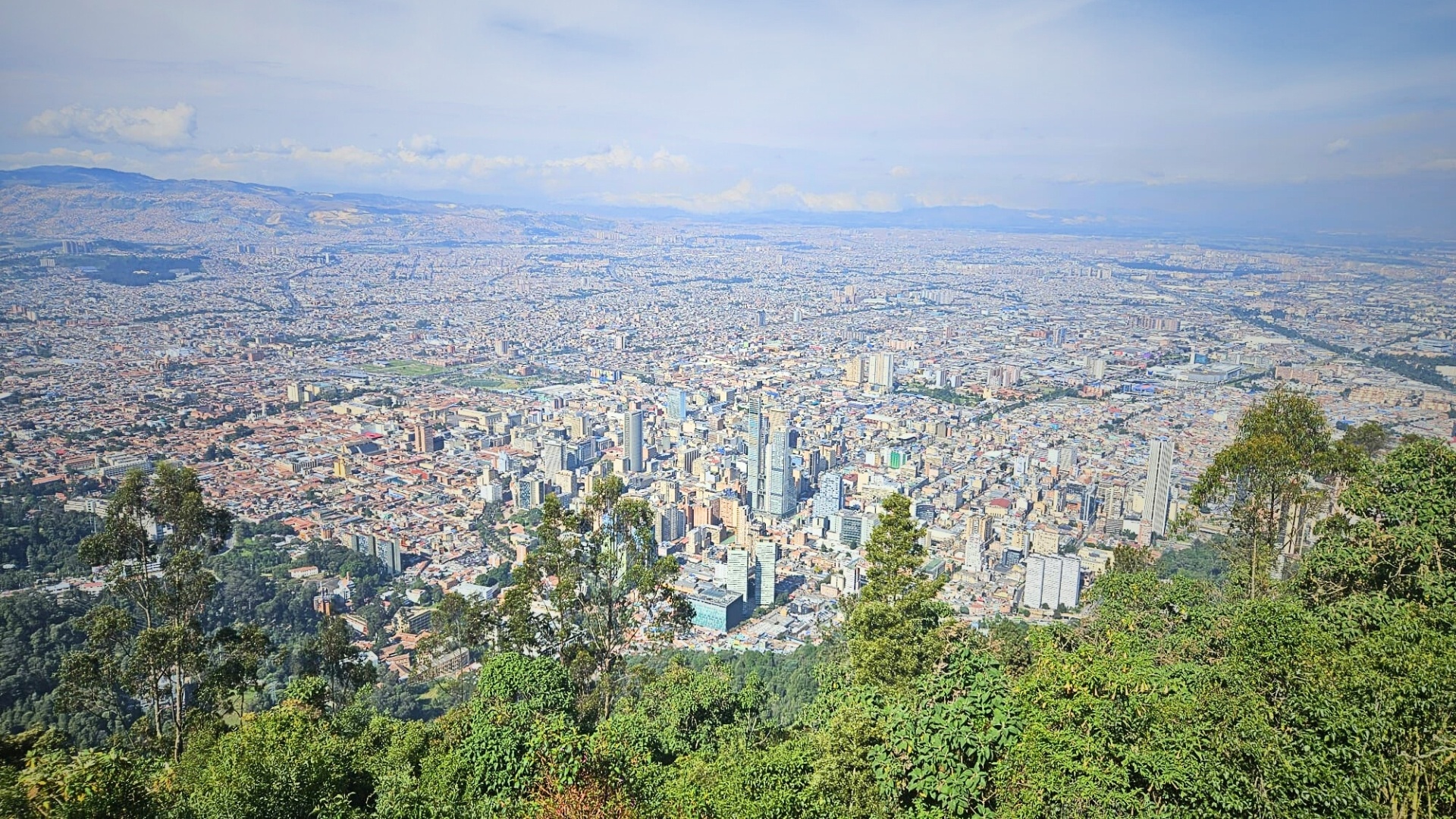
Upon arrival in Bogotá, participants encountered a vibrant capital where modern life and tradition blend seamlessly. The ascent to Cerro de Monserrate, a sanctuary perched at over 3,000 meters above sea level, offered a powerful moment of contemplation above the sprawling city. Dominated by the statue of the Señor Caído de Monserrate, this major pilgrimage site stands as a strong symbol of Colombian faith.
The visit to the historic city center led the group through La Candelaria, a district rich in history, with its colonial churches and cobbled streets. On Plaza Bolívar, they admired the Primatial Cathedral and other iconic buildings—living witnesses to the country’s religious and political heritage.
Zipaquirá and Villa de Leyva
Continuing northward, the group explored two emblematic sites of Colombia: Zipaquirá and Villa de Leyva.
In Zipaquirá, they entered the awe-inspiring world of the Salt Cathedral, a majestic underground church carved into the walls of a former salt mine. The unique atmosphere of this sanctuary—where stone becomes prayer—left a deep impression. Visitors were captivated by the vast galleries and the interplay of light, which created a mystical ambiance.
Further along the journey, the group arrived in Villa de Leyva, one of the most beautiful colonial towns in the country. Walking its cobbled streets and gazing upon the vast Plaza Mayor, they stepped back in time to the era of the first Spanish missionaries. A highlight was the visit to the Convent of Santo Ecce Homo, founded in 1620 by the Dominicans—a moment of reflection and spiritual depth.
Nestled in an arid landscape, the monastery stands as a testimony to the evangelizing efforts of early missionaries. Its austere architecture and inspiring silence offered a precious contemplative pause, echoing the heart of the journey: walking in the footsteps of mission, between heritage and renewal.
Popayán: At the Heart of Missionary and Cultural Heritage
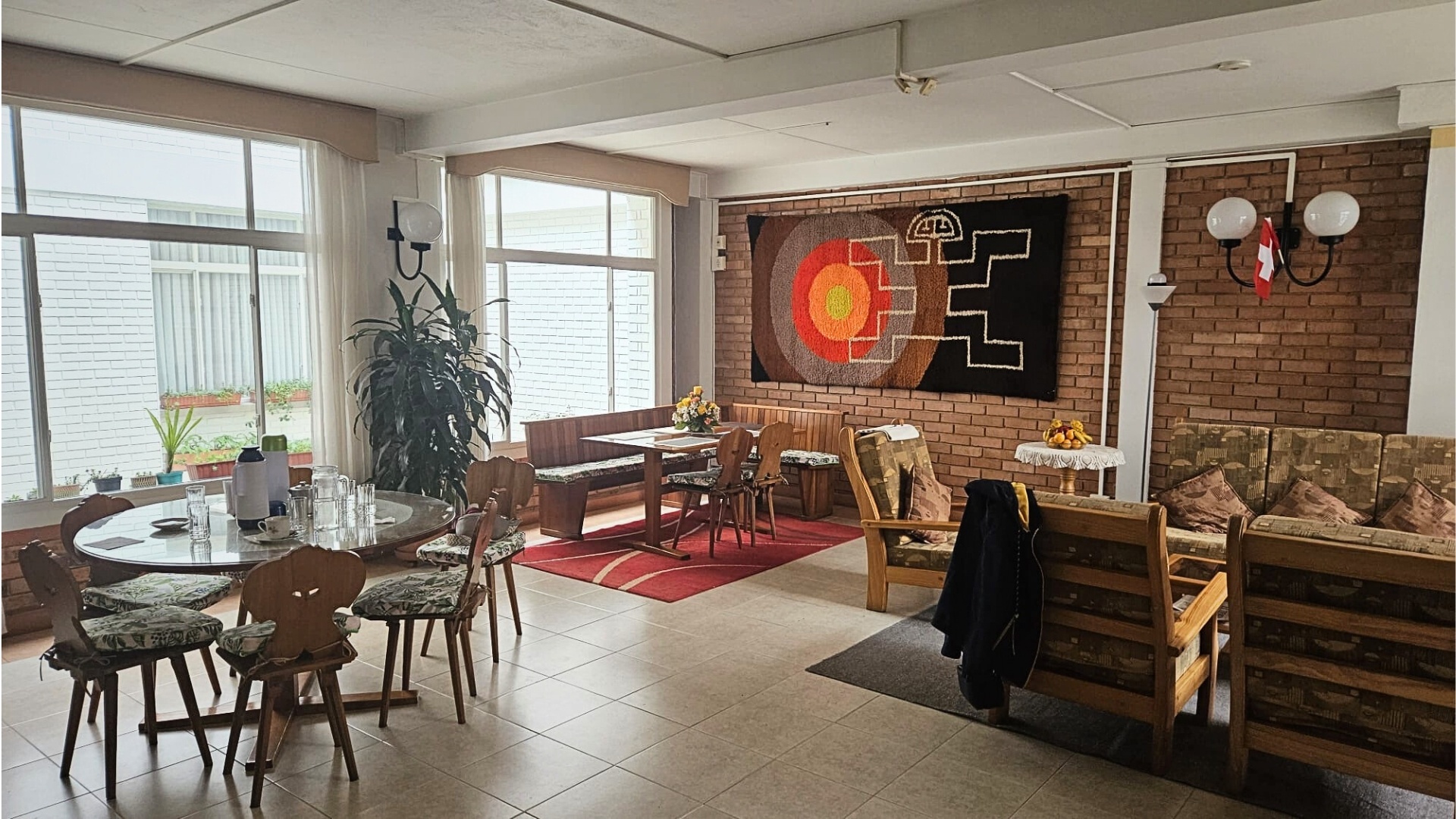
After an initial immersion in the historical and spiritual richness of central Colombia, the group continued their journey to Popayán, a city steeped in history and deeply shaped by the missionary presence of the SMBs.
Founded by the Spanish in 1539, Popayán long served as a major political and religious center. Until Colombia’s independence in 1819, it was the capital of Gran Colombia, which encompassed present-day Colombia, Panama, Venezuela, Peru, and Ecuador. Its architectural wealth and spiritual significance make it, to this day, an emblematic city.
During the visit to the historic center, participants discovered the Cathedral of Our Lady of the Assumption, which was visited by Pope John Paul II in 1986, three years after the devastating earthquake of 1983 that destroyed much of the city. This tragic event occurred on Holy Thursday and claimed the lives of over 200 faithful who were gathered in preparation for the Chrism Mass.
Today, the restored cathedral stands as a symbol of resilience and faith. The group also visited Saint Francis Church, another jewel of religious heritage, along with the central square and surrounding historic streets—silent witnesses to centuries of evangelization and culture.
Encounter with the Local Church and the Missionaries of Bethlehem
For Fr. Ludovic Nobel, Sunday began with Mass at the Parish of the Miraculous Medal, located near the SMB regional house. This parish, whose construction was completed thanks to the Missionaries of Bethlehem, stands as one of many signs of their pastoral commitment in the region. Its first parish priest was himself an SMB missionary.
That same day, the group visited the Puracé Natural Park, a protected area near Popayán known for its volcanoes and rich biodiversity. They were accompanied by the two SMB confreres currently residing at the regional house: Josef Schönenberger, known as Chepe, and Ernst-Peter Heiniger.
On Monday, Fr. Nobel had the honor of sharing breakfast with the Archbishop of Popayán, Msgr. Omar Alberto Sánchez Cubillos, O.P. The diocese currently includes 110 priests and around forty religious.
The Archbishop expressed his gratitude to the SMB for their longstanding service in the diocese, especially for the ministry of Fr. Josef Schönenberger (Chepe), who now serves as confessor at the cathedral—a role he fulfills with great sensitivity and to the appreciation of all. Msgr. Sánchez Cubillos also conveyed his openness to new forms of collaboration with the Society.
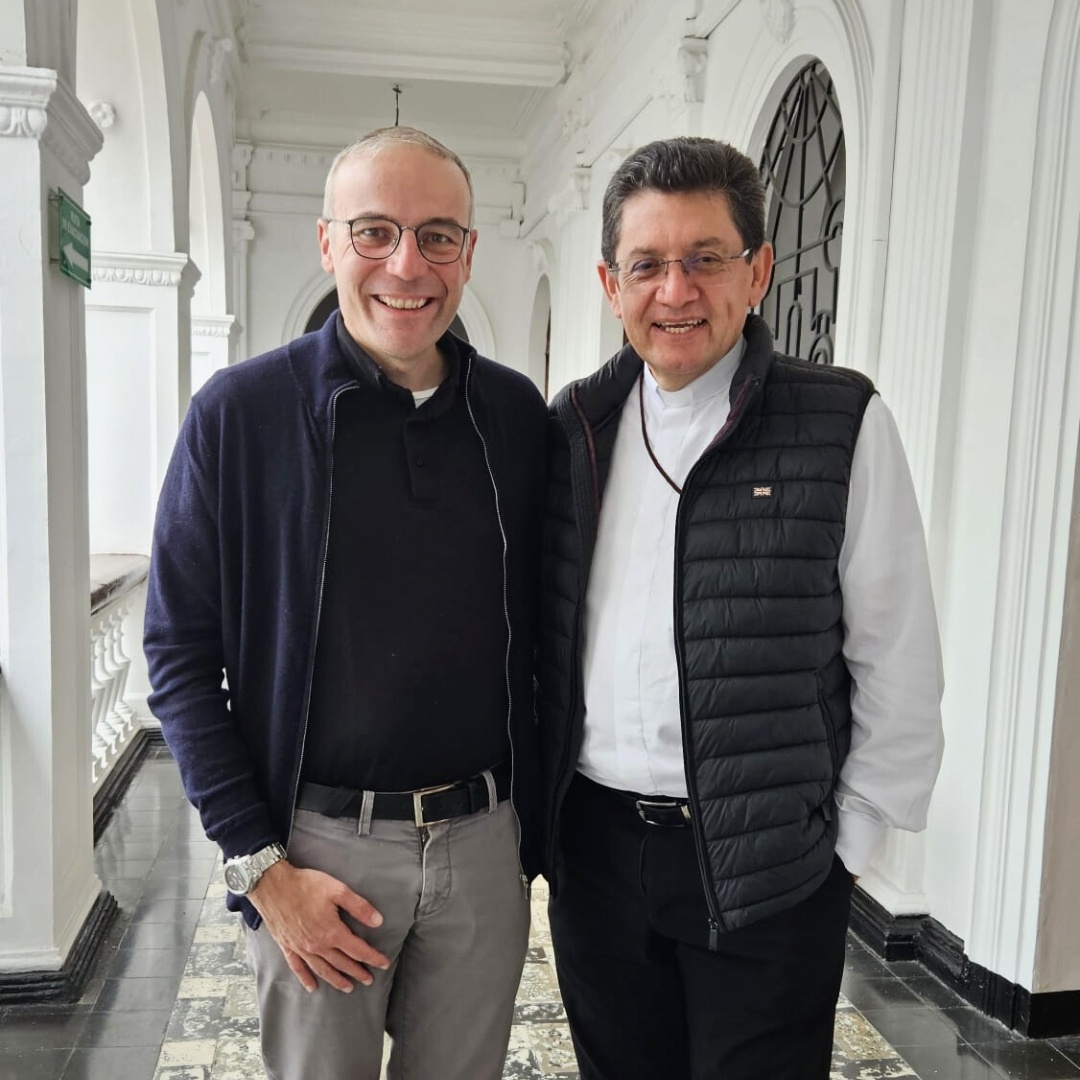
The journey through southern Colombia concluded with a final immersion in Cali, a vibrant city known as the world capital of salsa.
Cartagena: City of Saint Peter Claver, Apostle of the Enslaved
After exploring the central and southern regions of Colombia, the group headed north to Cartagena de Indias, the jewel of the Caribbean and a powerful symbol of the country’s cultural blending.
From the moment they arrived, participants were immersed in the enchanting atmosphere of Cartagena, a city listed as a UNESCO World Heritage Site. Among the iconic landmarks visited were the old city walls, the San Felipe de Barajas Fortress—a 17th-century citadel built to defend the city from pirate attacks—and the Museum of the Inquisition, which bears witness to one of the darkest chapters in the city’s history, through its collections and imposing colonial architecture.
At the heart of this stage of the journey was the visit to Saint Peter Claver’s Church, a 17th-century Jesuit building and a major pilgrimage site in Colombia. The remains of the saint rest here, in a sanctuary that carries deep spiritual significance.
Peter Claver (1580–1654), a Spanish Jesuit born in Verdú, was sent to Colombia in 1610. Cartagena was one of only two Spanish ports authorized to receive enslaved Africans—around 10,000 captives arrived there each year.
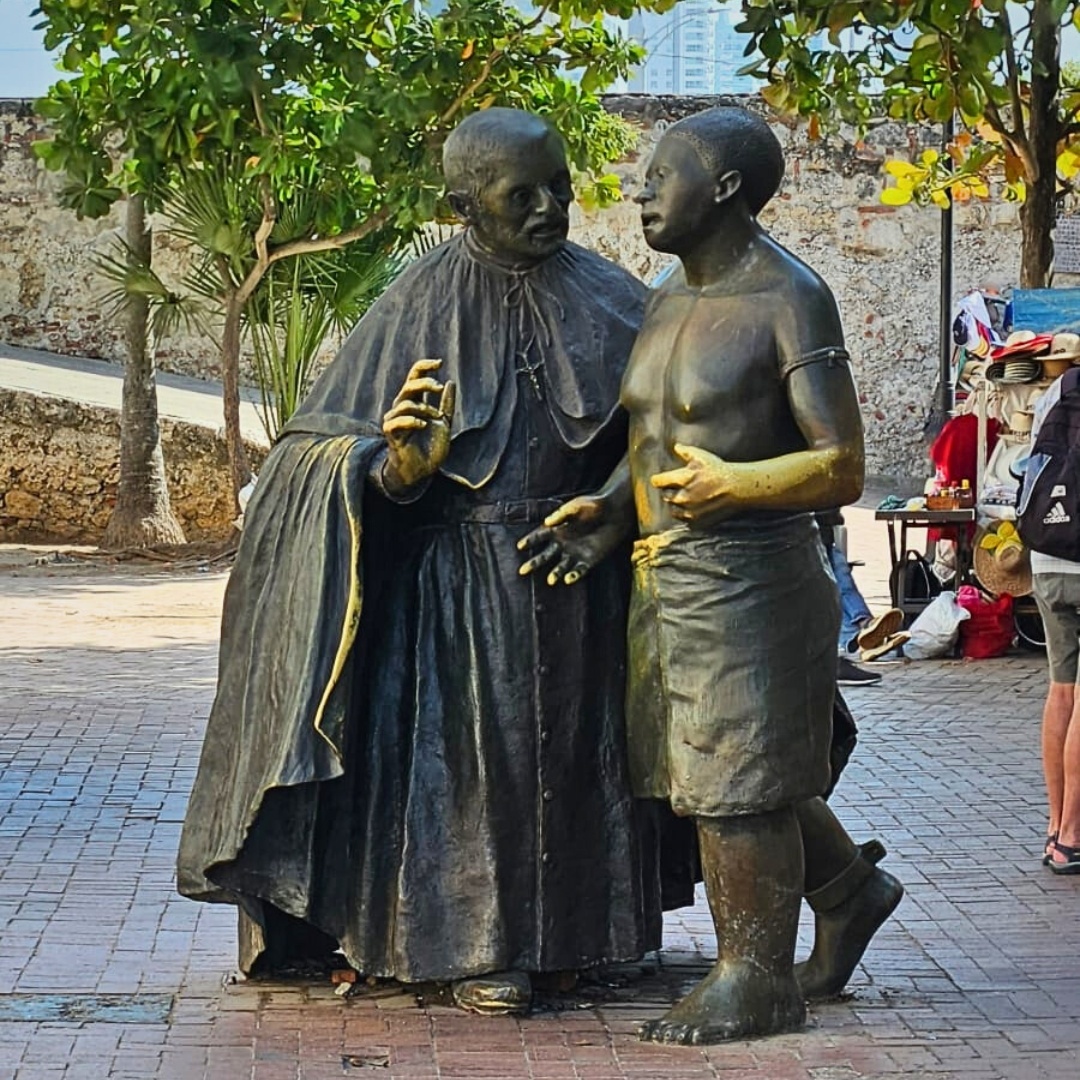
As soon as the slave ships docked, Peter Claver would rush to the harbor, accompanied by former slaves serving as interpreters. He boarded the ships to offer water, food, and first aid to the sick and dying crammed into the holds.
Aware that the captives would not remain long in Cartagena before being sent across the continent, he worked quickly to prepare them for baptism, teaching them the essentials of the Christian faith. It is estimated that he baptized around 300,000 people.
But his mission extended far beyond this first contact. He visited the sick in hospitals, including those suffering from leprosy, and he ministered to prisoners of war, both Dutch and English.
In 1650, a plague struck Cartagena. Faithful to his calling, Peter Claver continued to care for the ill until he himself contracted the disease. He died in 1654, worn out by his tireless service. From the moment of his death, he was venerated as a saint, and his legacy continues to inspire believers across the world.
Saint Bernarda Bütler: A Swiss Woman in Service of Mission in Colombia
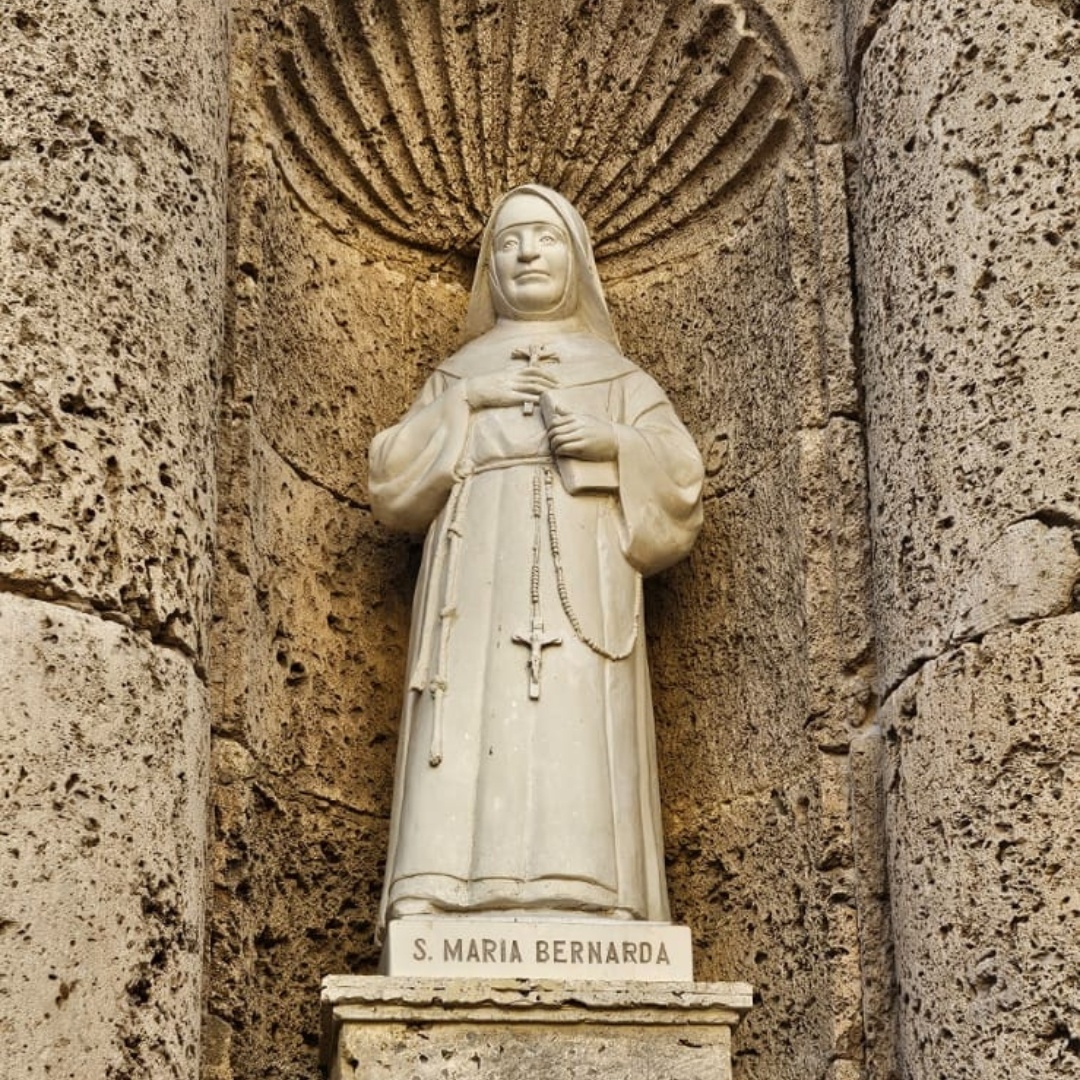
During their time in Cartagena, participants discovered another important chapter in the history of Swiss missionary work in Latin America: the life and mission of Saint Bernarda Bütler.
Born in Altstätten, Switzerland, she entered the Capuchin convent under the name Sister Maria Bernarda and was elected superior of the Maria Hilf convent in 1880.
Driven by a deep missionary calling, she left Switzerland in 1888 for Ecuador, where she founded the Congregation of the Franciscan Missionary Sisters of Mary Help of Christians, dedicated to education and charity. But in 1895, a revolution forced her to leave the country. She found refuge in Cartagena, Colombia, where she expanded the work of her congregation and continued to serve the poor with unwavering dedication.
She was beatified in 1995 by Pope John Paul II and canonized in 2008 by Pope Benedict XVI, becoming the first Swiss saint canonized since 1848.
The apostolic work of the Franciscan Missionary Sisters, under the leadership of Saint Bernarda and Mother Charitas Brader, played a crucial role in the missionary history of Colombia. Without their early presence and pioneering efforts, it is likely that the Missionaries of Bethlehem would never have established a mission in the country.
Indeed, Abbé Charles Boxler, a Swiss priest with a remarkable missionary zeal, accompanied the Swiss sisters from Altstätten during their work in Colombia and witnessed firsthand the immense pastoral needs of the region.
Upon returning to Switzerland, he became superior of the Salesianum in Fribourg, where he passed on his passion for the Colombian mission to young seminarians.
Deeply moved by the challenges facing the local Church, he responded with fervor to the call of Archbishop Diego María Gómez of Popayán, and worked tirelessly to mobilize Swiss support for evangelization in this land so in need of priests.
His commitment led to the sending of a group of Swiss diocesan priests, including Guillaume Fillinger, Théophile Tuor, and Lin Loser, who laid the foundation for the Fidei Donum mission in Colombia. In total, nearly forty Swiss priests dedicated part of their lives to serving the Church in this country.
Despite Popayán’s historical prestige, priestly vocations remained scarce. In response, Archbishop Gómez reached out to the Missionaries of Bethlehem through Abbé Fillinger. This marked the beginning of the SMB mission in Colombia.
Immersion in La Boquilla and Closing of the Journey
On Thursday, February 13, the journey continued to La Boquilla, a small fishing village on the outskirts of Cartagena and a vibrant center of Afro-Colombian culture.
The following day, the group began their journey back. In the afternoon, they headed to the airport, their hearts full of vivid images and inspiring encounters.
We invite you to relive these moments by exploring our photo gallery dedicated to this voyage.
Feel free to also check out the announcements for upcoming spiritual journeys organized by Pèlerinages Bibliques Romands and guided in the spirit of Étoile de Bethléem by Fr. Ludovic Nobel. You can also revisit the highlights of our past faith and culture journeys by reading the dedicated articles available on our website.
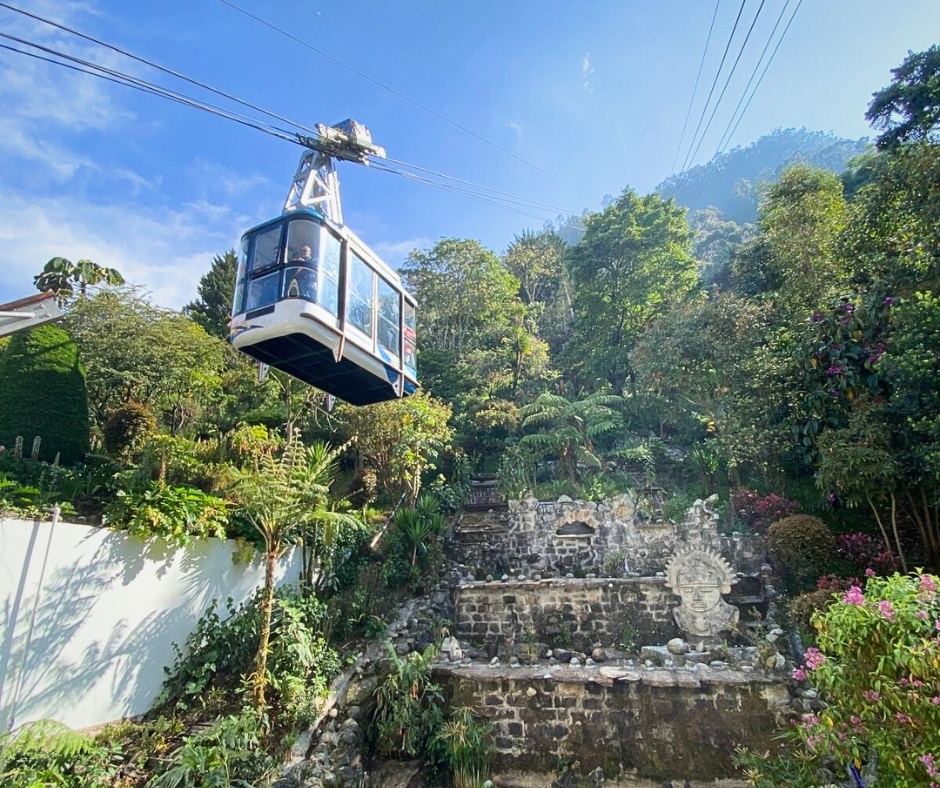
Comments are closed.